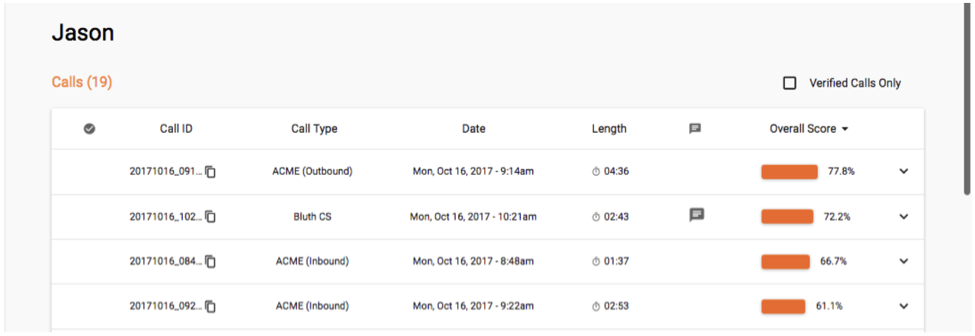The internet has, for better or worse, dramatically reshaped the way the world works. From how people build personal relationships among each other all the way to how companies conduct business offline, we have witnessed how the rise of the Internet era has left behind a trail of changes in almost everything we do. But this doesn’t mean that all things conventional and traditional must be sent to the trash bin, as orthodox methods still hold invaluable roles in today’s environment.
Take sales, for example. In the past, when customers came into your store, they were far less educated due to the inability to do research via search engines. While some industries required more fastidious efforts, requiring agents to go door-to-door or call prospects one by one; for them, hard selling was the way to go.
Today, because the internet has afforded quick and easy access to all sorts of information, cold sales calls have proven themselves to be, well, pretty hard to sell — in fact, 82% of B2B decision-makers leave calls feeling like the reps on the other end of the line are unprepared.
Don’t buy into the doomsayers just yet. They might be dead set on predicting an end to the cold call, but you can breathe new life into the method by following these four simple ways of improving your customer’s experience.
1) Improve Your Sales Calls by Asking Questions
Keeping up with changing consumer needs entails a little bit of personalization — more than merely showcasing your product and telling them how good it is, make them realize how exactly it caters to their daily needs and what specific role it could play in their lives. The quickest route towards being able to tweak your pitch to their exacting standards is through a clear understanding of your prospective buyers’ needs.
How? It’s simple, really: ask them. In a 2017 study, Gong found a direct link between the number of inquiries made into a lead’s needs and the success of a sales call.
It must be a given that, prior to implementing any of your sales strategies, you need a thorough understanding of the general consumer insight that you want to leverage. Draw these insights from your inbound marketing and your core business model.
The next task is to list the anticipated needs of your target market and design a custom-made pitch centered on those needs. The pitch should outline the various scenarios and guide your sales reps on actions to be undertaken given the many possible paths of conversation. Drive conversions by ending the pitch with a clear and captivating call to action that reiterates the need for purchase.
Make it strong, compelling, and relatable — remember that on the buyer’s end, sales calls can get pretty annoying, especially if the agent talks about things that are irrelevant to the customer.
Get to the point, and get there fast.
2) Improve Your Sales Calls by Giving Clients a Clear Road Map
In line with our last bit of advice, your prospective buyer has to see that your product fills a certain void in their lives like a missing puzzle piece. Prove the unparalleled value of your brand by walking them through the various ways it could improve their work or personal lives. A basic understanding of human tendencies suggests that decision making is a step-by-step process, so it would be imprudent to expect buyers to jump the gun immediately after your sales reps deliver their initial pitch.
Train your agents to walk customers through the whole process of purchase, guide them through the post-purchase customer service relations, and, as early as now, artfully ingrain in them the need for future repeat purchases. This way, your buyers get a clearer view of the big picture, making it easier for them to visualize a relationship with your brand. Best of all, it lets you focus on more attention-grabbing marketing, leaving the nitty-gritty storytelling to your reps.
3) Improve Your Sales Calls by Inviting Reciprocity
The Rule of Reciprocity states that, more often than not, people feel indebted when someone does some sort of service to them and are therefore obliged to give something in return. In the world of business, this simply reads as: give something of value to prospective buyers and they will be compelled to return the favor, most often through purchase. In practice, this translates to an effective presentation of expert advice and actionable solutions to customer problems through the sales call. When potential buyers see and realize how sales reps go the extra mile by extending a helping hand and laying down worthwhile suggestions, they’ll be more likely to reciprocate the help and purchase your product — Hubspot reports that 62% of buyers see providing relevant information as a concrete way of improving the sales experience.
4) Improve Your Sales Calls by Minding Every Word
Transcripts and recordings reflect exactly what’s happening on the ground. As such, sales call transcripts offer a gold mine of information for future strategy building and decision making. Managers must develop a keen eye for spotting nuances in the conversations and quickly identifying key points with business impact, as these can and should be noted for future improvements in sales strategies. The data doesn’t lie and it’s your job as a manager to create the story out of the numbers: mine this treasure trove of valuable insights into what works and what doesn’t.
However, collecting call data is a different ball game entirely. Unlike email threads, chats, and other text-based touchpoints, calls are not readily uploadable to a CRM or database, which is why it’s important to have a call analytics tool handy.

A call analytics tool like VoxJar (see image above) will allow you to bypass thousands of man-hours worth of transcriptions so you can get straight to the meat of your insights—no data cleansing or querying required.
How does a call analytics tool work?
Easy: it makes use of AI and voice recognition technology to automatically transcribe calls, and then classifies those transcriptions according to criteria like call type, call length, related keywords, customer satisfaction, net promoter score (NPS), first contact resolution, and many more. By the time the data reaches you, it’s organized in easy-to-read charts on a dashboard.
Having call data handy allows you and your sales managers to conduct objective performance evaluations and appraisals of agents, helping you identify your top-performing sales agents and spotting problem areas among your worst (which may also provide useful insights for employee management and strategic human resource planning).
Conclusion
While sales calls are fading in the eyes of “marketing gurus” and “industry watchers”, your business can still take advantage of its many benefits by practicing the above-mentioned suggestions. What’s more, current technologies actually give you the power of automation, allowing you to employ the tactics automatically, lifting the burden of transcribing and analyzing from your sales agents and letting them focus all their energy and attention on closing deals with your customers. Try out a call analytics solution and see how strong actionable insights derived from sales call data can help you optimize your sales practices today.
This is a Contributor Post. Opinions expressed here are opinions of the Contributor. Influencive does not endorse or review brands mentioned; does not and cannot investigate relationships with brands, products, and people mentioned and is up to the Contributor to disclose. Contributors, amongst other accounts and articles may be professional fee-based.

